Where is the market headed?
The market, I would say, is in fine fettle on the eve of the RBI policy announcement, and things are looking strong across market capitalizations. The day was volatile. After reaching a high of around 24,900, the index closed lower near 24,750—a drop of 150 points from the day’s top. Despite the intraday volatility, the Nifty still managed to close up by about half a percent, so overall sentiment remained positive.
Market Overview
Nifty is currently Up by 0.53%.
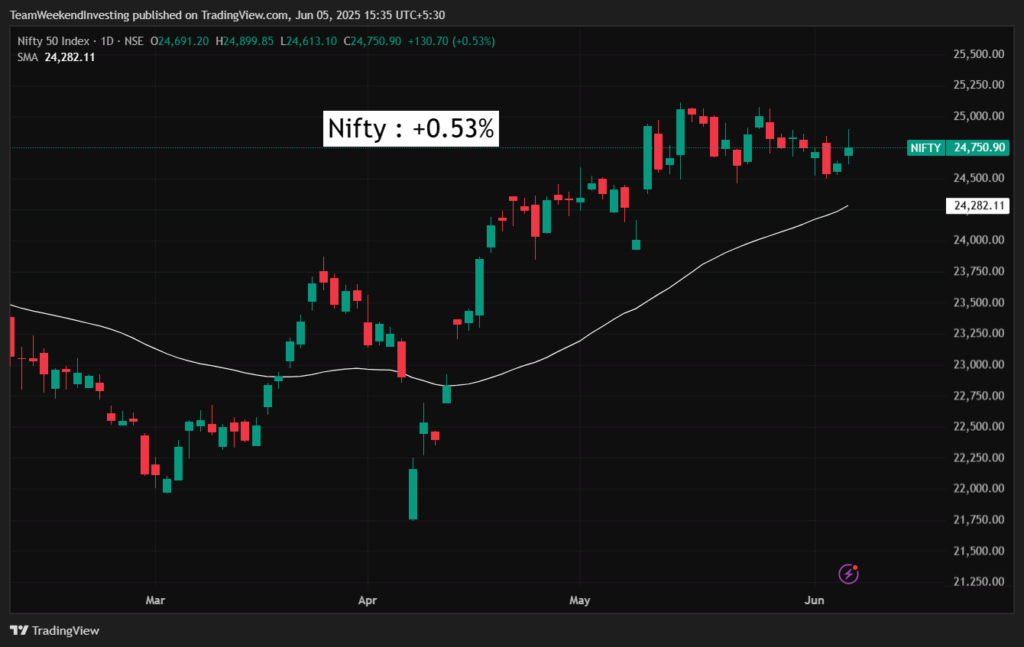
Nifty Next 50
The Nifty Junior index also ended the day higher, gaining 0.42%.
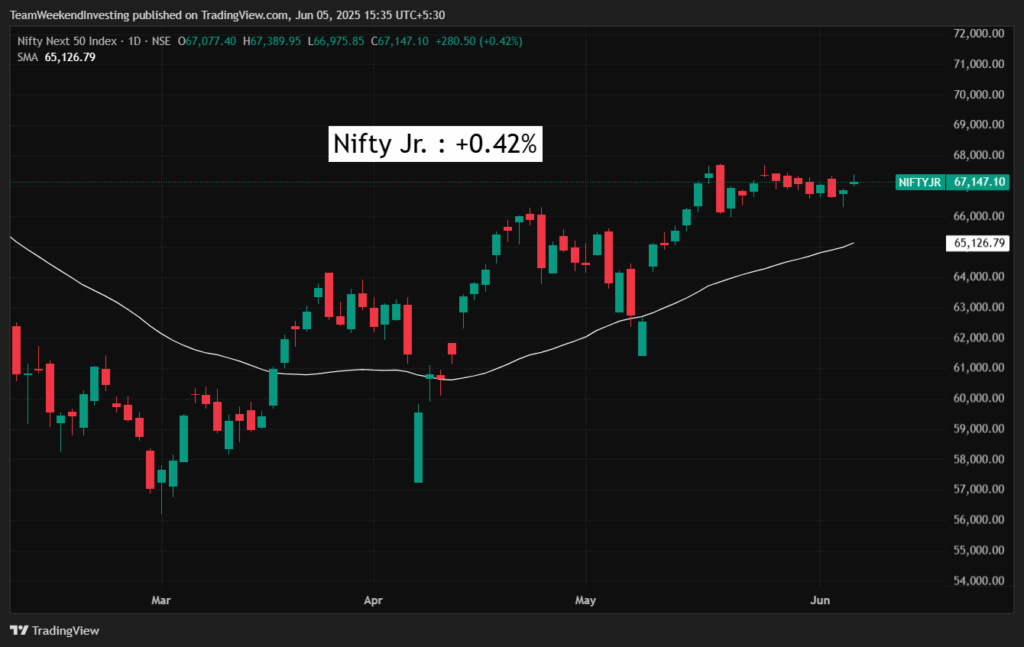
Nifty Mid and Small Cap
Nifty Midcap continued its upward march with a 0.66% rise, hitting a new recent high. Small caps matched this with a 0.66% gain, also reaching a new high. The broader market is clearly in an uptrend.
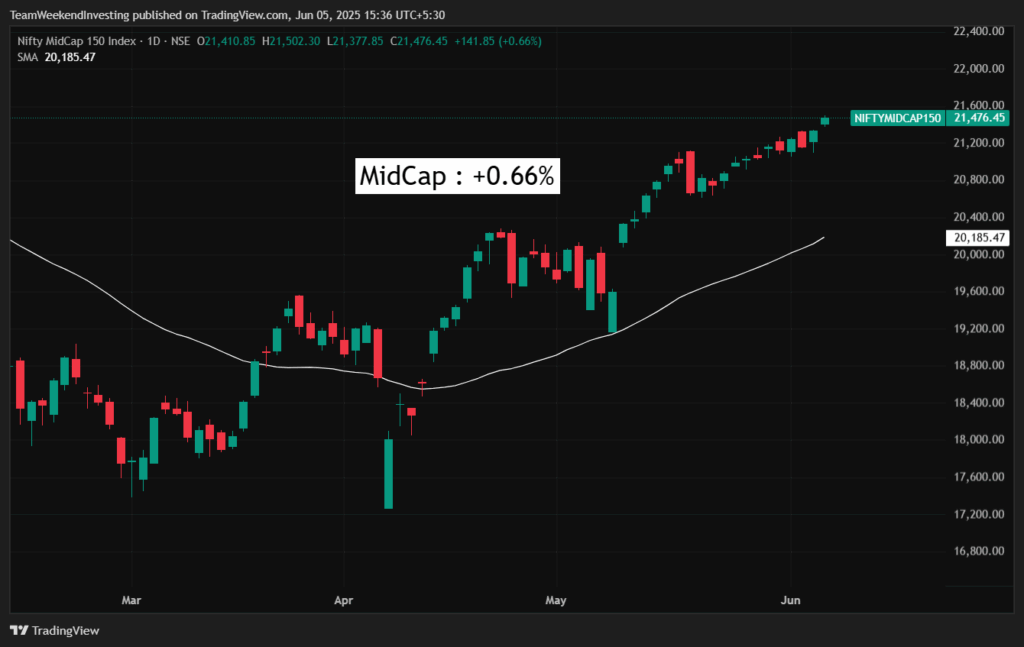
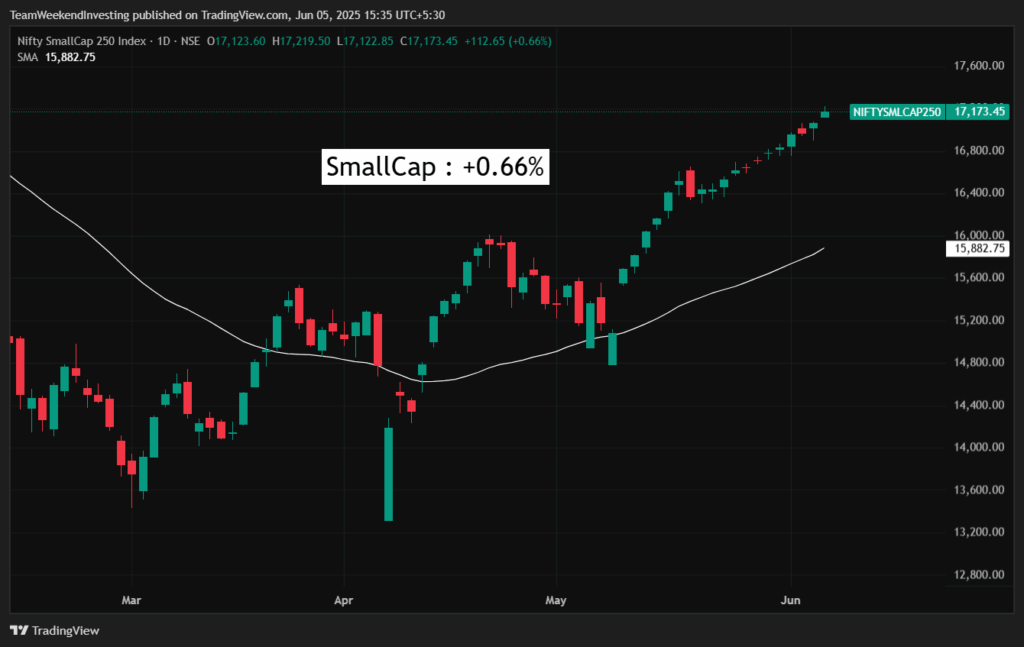
Bank Nifty
The only segment showing sluggishness was the Nifty Bank, which remained stagnant with just a 0.15% increase.
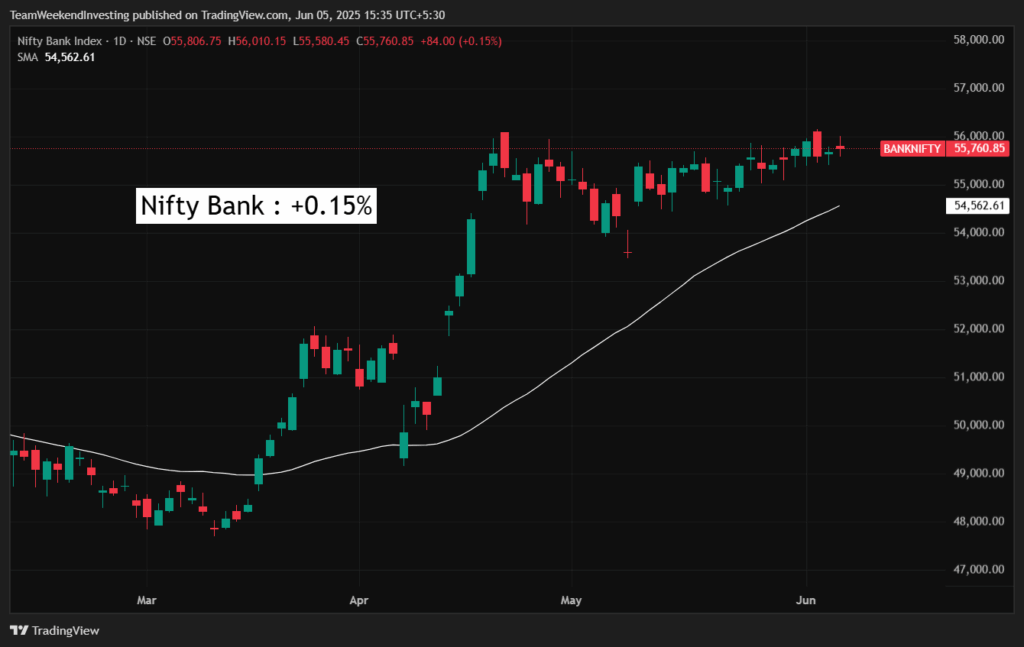
GOLD
Gold is on the move again. Prices have crossed ₹9,900 per gram, and we are inching close to the highest ever daily close for gold. On the weekly chart, we are also lined up for what may turn out to be the highest weekly close to date. It’ll be interesting to see how gold performs in the coming days.
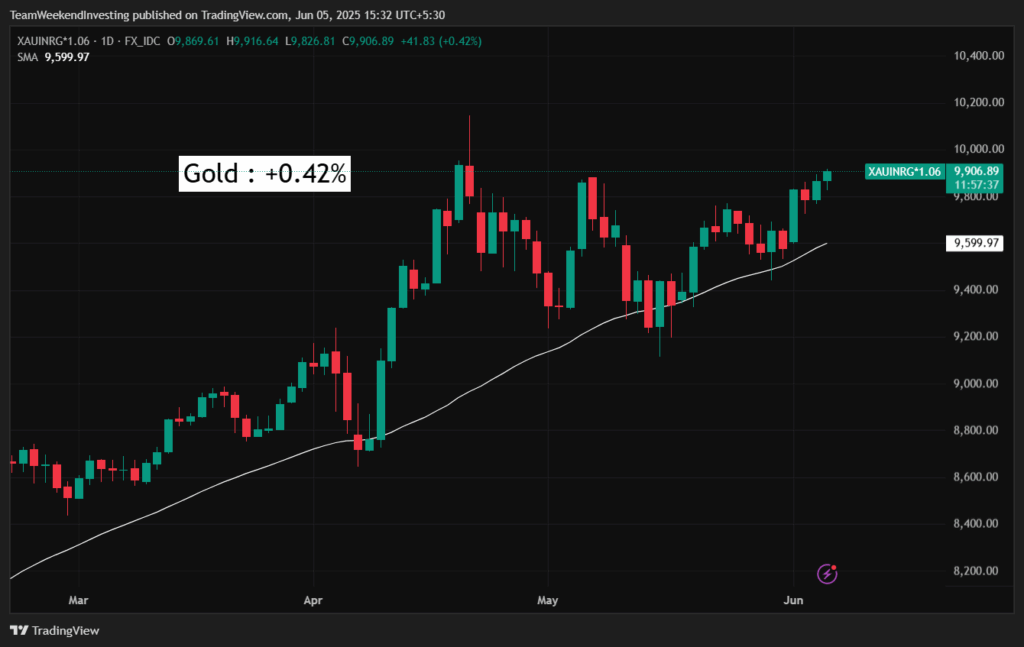
Advance Decline Ratio
Advance-decline trends were initially favorable to the advancing stocks, but some of those gains were given up after 2 PM as volatility picked up in the second half of the session.
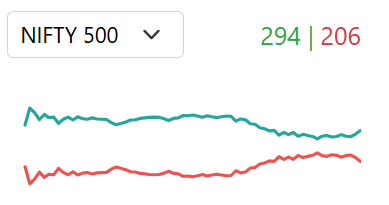
Heat Maps
Stocks like ICICI Bank, Eternal, Sun Pharma, and Power Grid contributed to keeping the Nifty buoyant. Reliance also pitched in with a healthy 1.3% gain. On the losing side, Tata Consumers, the Bajaj twins, and Axis Bank ended in the red.
In the Nifty Next 50 segment, Dmart, HAL, and Zydus Life had a good day. Naukri stood out with a solid 4.5% gain, while DLF also posted a strong 2.7% rise. On the flip side, PSU banks faced some profit booking pressure, with Bank of Baroda and Canara Bank trading lower. Among capital goods, Siemens and Havells declined. Other notable laggards included TVS Motors, Pidilite, IOC, and BPCL.
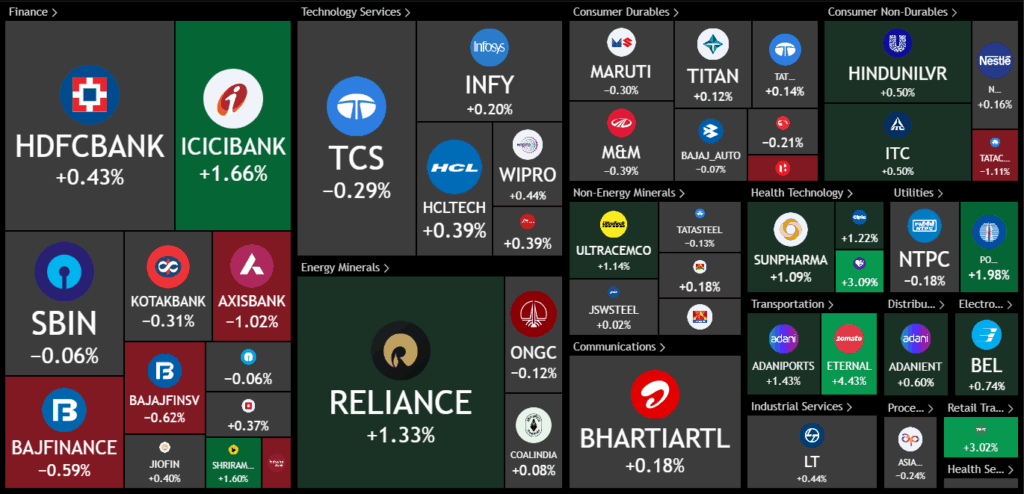

Sectoral Overview
In sectoral trends, capital markets were the highlight again. BSE stock and NSE in the unlisted market continue to chart new territory every day. CDSL has also joined the rally. This comes despite Nithin Kamath of Zerodha stating that broking might see a 20% dip this year. But the market doesn’t seem to be reacting negatively to that caution. Capital Markets rose by 2.9%, defense stocks gained 2.3%, and real estate also continued its recent strong performance.
These three sectors—capital markets, defense, and real estate—have surprised many and continue to ride strong momentum. Pharma stocks also did well today with a 1.3% uptick. Central Public Sector Enterprise (CPSE) stocks also made a comeback with a 0.9% gain. The only areas where we saw profit booking were PSU banks, which fell 0.6%, along with some minor declines in the auto, private banking, and media sectors. Otherwise, most sectors looked strong.
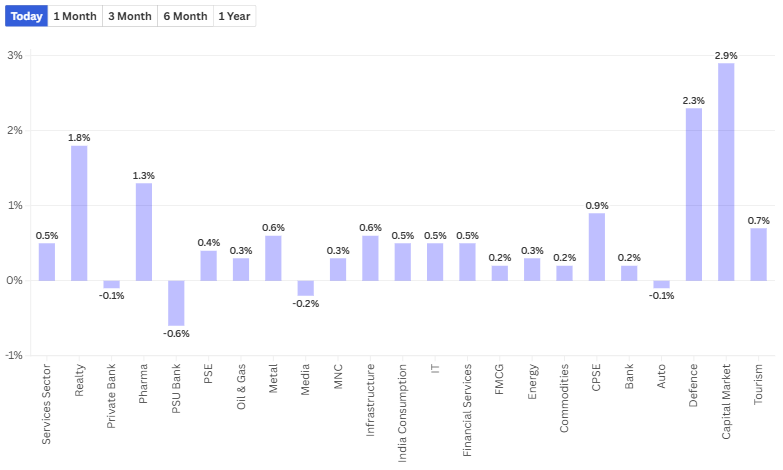
Sector of the Day
Nifty Capital Market Index
Within capital markets, stocks like 360 One, CDSL, Angel One, BSE, and MCX showed fantastic movement. From the recent lows in March, the capital market index has risen from nearly 3,000 to 4,500—a massive 50% gain in a very short period.
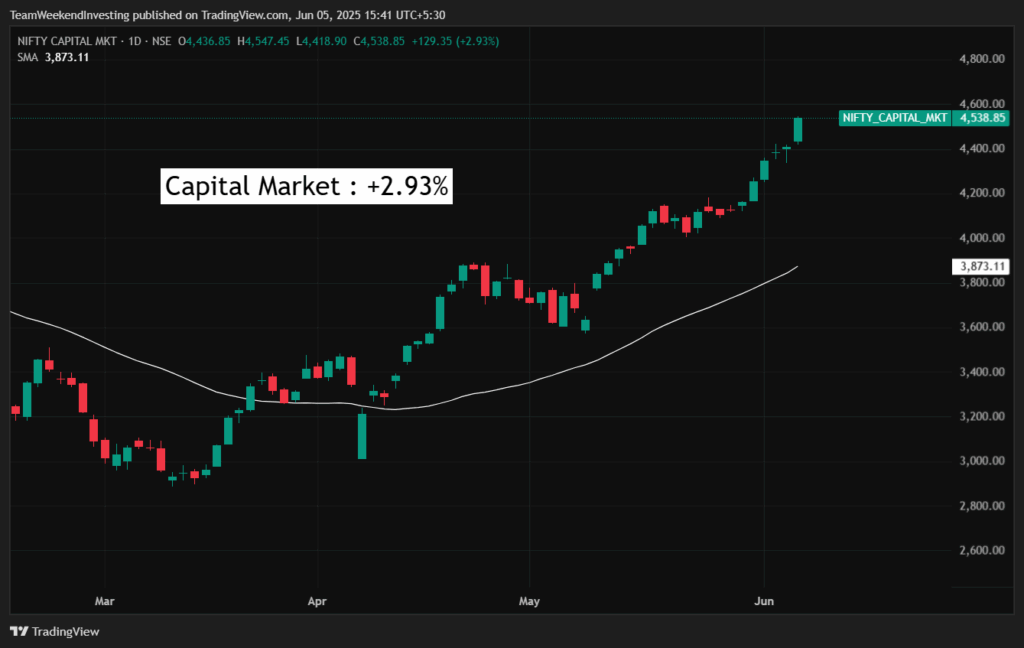
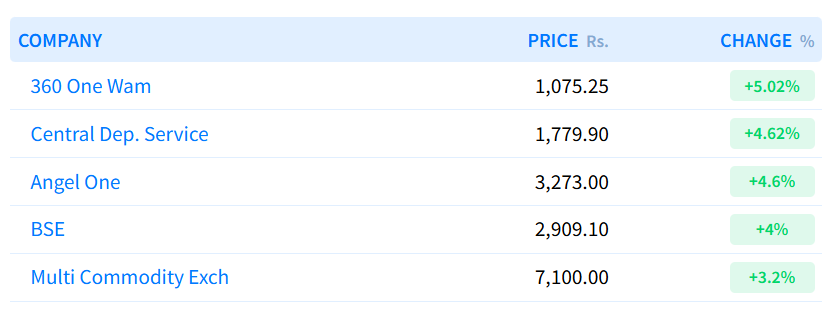
Story of the Day: The Bias of “No, I Will Not Buy This Stock.”
Now, let’s get to today’s key topic—“No, I will not buy this stock.” When does this happen? It usually arises from bias. The first kind is a bias against a sector that hasn’t performed for a long period. We form a mental block and conclude that the sector is simply not worth investing in. The second type is a bias against a specific stock that hasn’t performed for us personally. For instance, if your first and second trades in a stock went badly, you may decide the stock simply isn’t for you. These kinds of biases are common and understandable, but they can be very limiting.
Non-discretionary systems help override these biases. Let’s take an example of a sector that didn’t move for 13 long years. One such sector, shown in yellow in our charts, did absolutely nothing from 2011 until very recently.

While the Nifty gained 225% in that time, this sector showed zero gains. Naturally, over such a long period, investors began to believe it was dead weight. But post-COVID, the very same sector delivered a 500% return compared to the Nifty’s 170%.
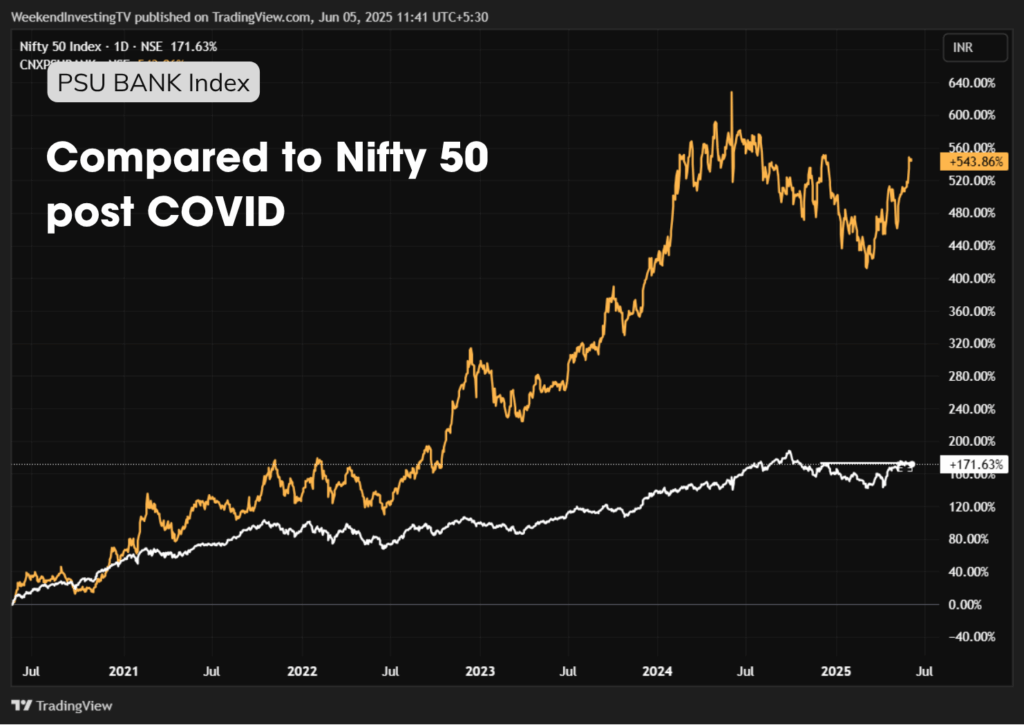
The sector in question was the PSU Banking Index. This example illustrates how dangerous it can be to write off a sector or stock permanently.
There is no such thing as a perpetually performing or non-performing stock or sector. Market leadership keeps changing, and if you’re using a systematic, non-discretionary strategy, you are more likely to stay free of emotional or psychological baggage.
When sectors like PSU banks don’t perform for years—just like pharma post-2015 or FMCG for a while—you begin to ignore them. Currently, some consumption stocks are going through a similar phase. But these cycles always turn.
In a non-discretionary system like rotational momentum, the stocks that are performing naturally come into your portfolio. Let’s take Bank of Baroda as an example.
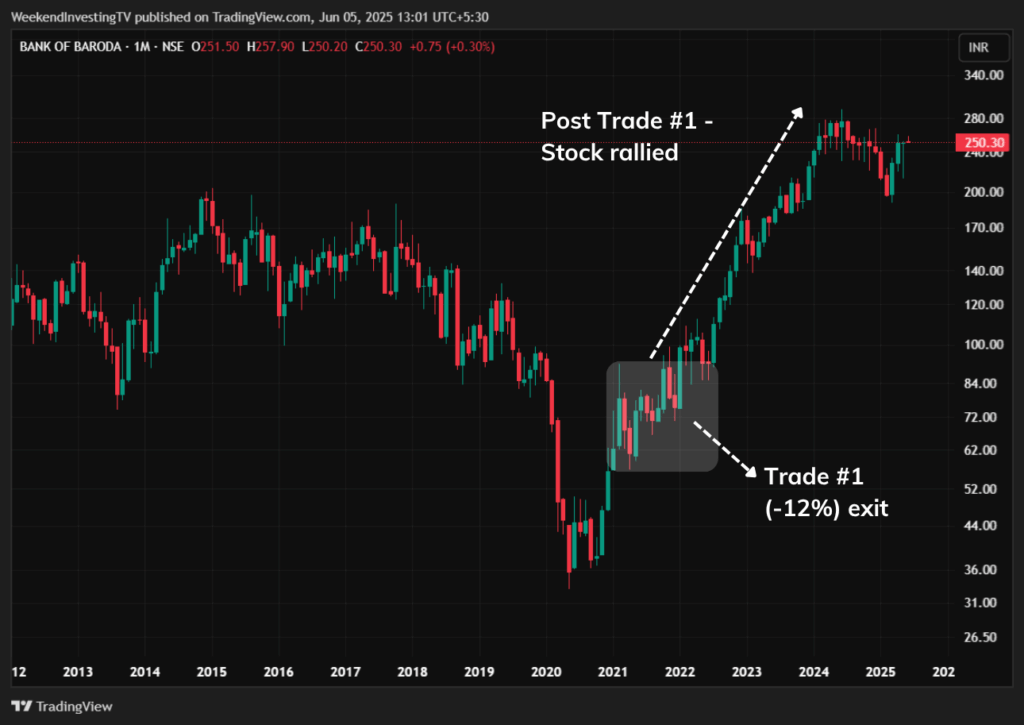
From 1999 to 2011, the stock went from an adjusted price of ₹3–4 to nearly ₹150–₹200. Then, for the next 10 years, it did absolutely nothing. But from 2021 onwards, the stock once again delivered a five to six times return.
If you had taken a small loss on your first post-COVID trade in Bank of Baroda and let that influence your future decisions, you would have missed the big rally that followed. Many discretionary investors do exactly that—they skip a stock just because it hurt them once. But in some of our strategies, that second trade may have delivered a 98% gain. Missing it because of past disappointment would have been costly.
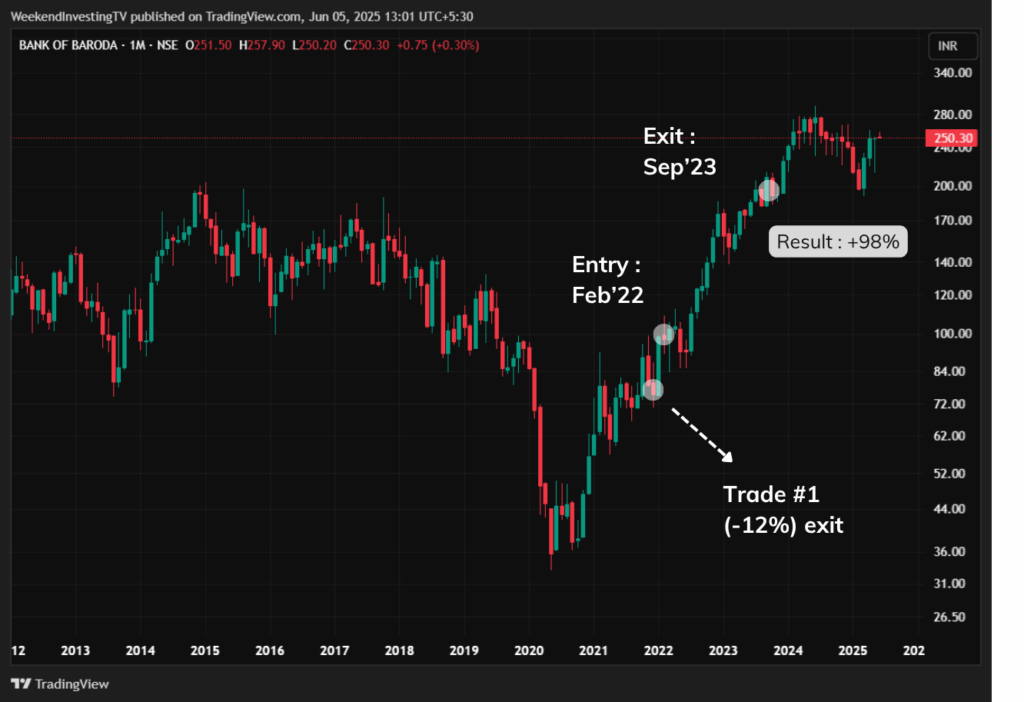
This is why momentum strategies don’t aim to predict tops or bottoms. They aim to catch slices of large trends and skip the sideways, flat phases. Even if a trend goes from ₹100 to ₹500, and you catch only the ₹150 to ₹250 section, that’s a meaningful 66% gain. The goal is to rotate capital into new opportunities as and when they emerge.
The key takeaway here is that every new uptrend brings new leadership. Today, sectors like defense, capital markets, and real estate are taking charge—sectors that were mostly neglected in past rallies. You can’t capture these emerging trends unless you let go of old biases. Being non-discretionary helps you avoid that ambiguity. You don’t carry emotional overhangs like “this stock always fails me.” Even if you try a stock five times and it loses, the sixth time might make up for all of it—and then some.
Let me know in the comments—have you ever been affected by bias in trading or investing? Most of us have. The key is to learn from that journey and not let it hold you back. Thanks for tuning in. We’ll see you in the next one.
WeekendInvesting launches – The Momentum Podcast
Join us on The MOMENTUM PODCAST as we sit down with Venkatesh, a dynamic product manager and MBA graduate from Hyderabad. Discover his incredible journey from starting investing during the 2020 COVID crash to achieving a remarkable 5X salary jump!
In this insightful conversation, Venkatesh shares:
✅ His early investing blunders and crucial lessons learned.
✅ How he built a disciplined investing routine with Nifty index funds and direct stocks like Tata Elxsi.
✅ The surprising benefits of his IT domain knowledge in stock picking.
✅ His long-term vision for financial independence and strategic wealth building.
✅ Why he prioritizes investments and EMIs (including his home loan!) before anything else.
If you’re a young professional looking to kickstart your investment journey or seeking inspiration for disciplined wealth creation, this episode is a must-watch!







